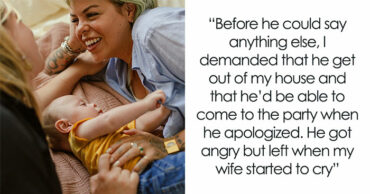Queen Charlotte: A Bridgerton Story introduced fans to the early days of the royal romance between King George (Corey Mylchreest) and Queen Charlotte (India Amarteifio). The season is set decades before the main Bridgerton timeline begins and mainly centers on Queen Charlotte’s rise to prominence and her complicated marriage to the King of Great Britain and Ireland during the Georgian era. Although the series takes liberties in its storytelling of historical events and British royalty, the limited series has a surprising amount of truth.
In the show, King George and Queen Charlotte marry within hours of meeting, and initially, their union is a love-hate relationship; George seemingly does not want to spend time with his wife. and Charlotte is hurt and angry. However, every time they see each other, the chemistry between them is undeniable. Evidently the actors have done a great job at portraying the royal couple. This article shall reveal how much of the story presented in Queen Charlotte is actually true.
1. Queen Charlotte and King George Are Actual British Monarchs
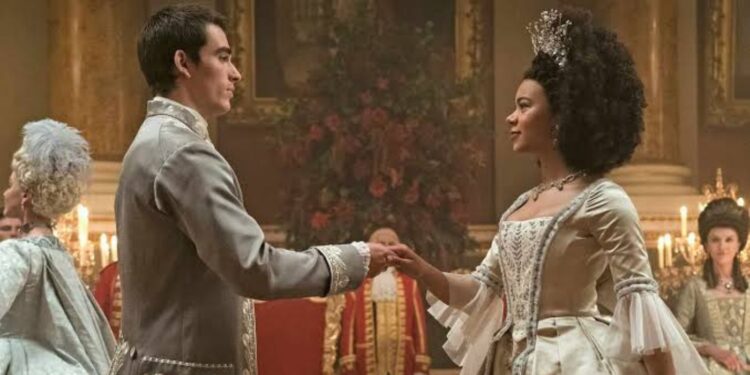
Although Queen Charlotte is a fictional television drama, the main characters are based on two real historical British monarchs – King George III, who ruled the United Kingdom and Ireland from 1760 to 1820, and his wife Queen Charlotte, who was from a rather provincial dukedom in a duchy in Northern Germany. King George III. and Queen Charlotte also had 15 children, with 13 making it into adulthood. Their son King George IV became King in 1820 and their granddaughter Victoria reigned as queen from 1837 until 1901, the second-longest reign in British history, constituting the Victorian era.
2. The Match Was Arranged to Secure King George’s Lineage
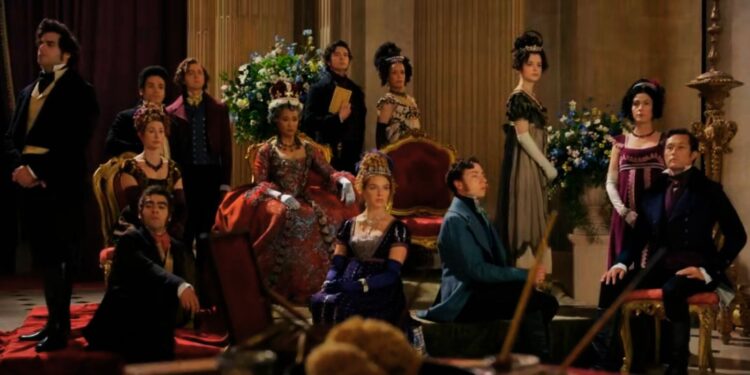
As his grandfather, King George II died in 1760, the 22-year-old King George III had to succeed to the throne. His unmarried status was a major issue and he needed a wife quickly, to make him seem credible to his people and to secure his lineage. In the series as well as in real life, the 17-year-old Princess Charlotte of Mecklenburg-Strelitz accepted the emissary marriage proposal and the couple got married just six hours after Charlotte arrived in England.
Moreover, the pressure that the older Queen Charlotte (Golda Rosheuvel) applies to her children in regard to giving her an heir in the series, is also in alignment with history. Queen Charlotte was supposedly in agony about the fact that her children struggled with securing a “legitimate” match and producing legitimate children, that were not out of wedlock. Ultimately, in the series and in real life, Prince Edward and his wife, Princess Victoria, are expecting a daughter (who would become Queen Victoria), concluding Queen Charlotte’s hunt for an heir to the throne.
3. Was King George Actually Mentally Ill?
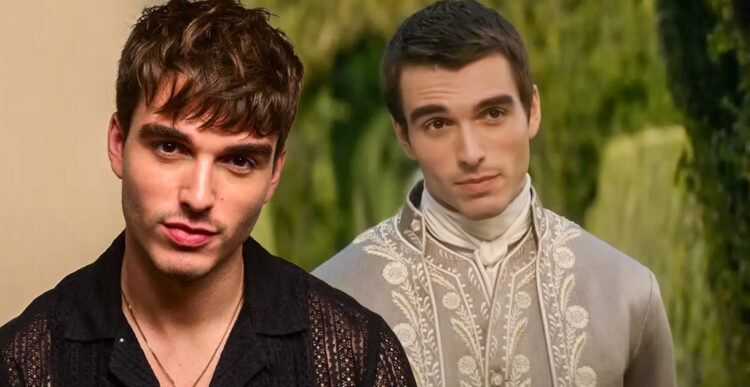
King George is depicted as mentally ill in the Netflix series; this is another part of Queen Charlotte‘s story that is actually true. In the 1700s all mental illnesses, were referred to as “Madness” to describe conditions that were not yet researched enough. Nowadays, historians believe the king had bipolar disorder and chronic mania, which worsened with the arsenic treatment his doctor prescribed. At least five episodes of his mental illness are historically documented. It is arguable if his physician actually resorted to such inhumane and torturous methods as deployed in the show. However, it is reported that he was often put in a restraining jacket when his mania drastically worsened in 1788.
4. King George’s Mental Illness Was Hid From Charlotte At the Time of Their Marriage
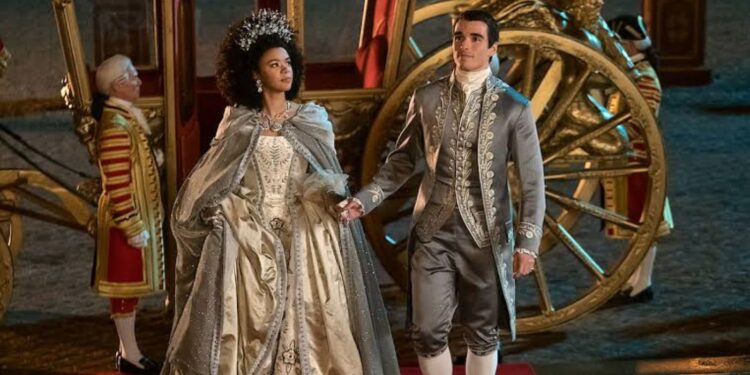
Right after the couple gets married in the show, the King disappears, which the viewer later on learns, is because he wanted to protect Charlotte. This is not historically proven, however, it is factually true that Charlotte likely did not know about his illness, due to not knowing anything about him. Later on, the King was also kept in confinement when his mental illness got worse to protect Charlotte, and thus sadly, his condition put a strain on his marriage with the Queen, even though they were a rare love match. Again proving, how the series reflects many truths about these two royals.
5. There Was No “Great Experiment”
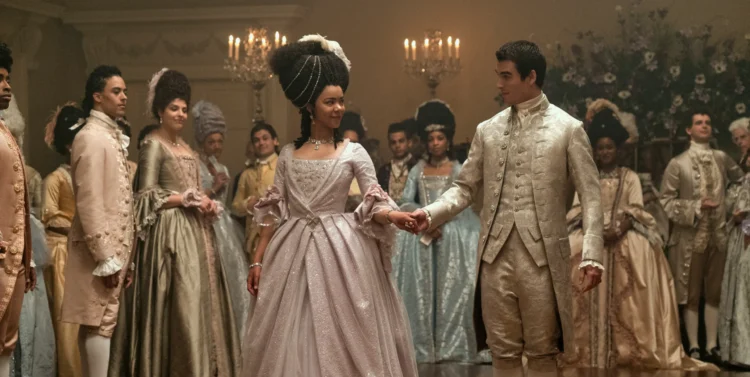
One major difference between the Queen Charlotte series and royal history is, that “The Great Experiment” never happened in real life. The concept of “The Great Experiment,” established by Princess Augusta (King George’s mother) and the House of Lords introduced in the first episode of the show, refers to the interracial marriage between Charlotte, and King George. Since the royal class was entirely white, the interracial relationship and Charlotte as the first Black Queen of England was supposed to signify a turning point in the societal structure, and showcase the Crown’s attempt to integrate people of color into the Ton and grant them more land and status. Evidently, there was no such experiment in the 1700s, and racial equality was far from being achieved in society.
6. Queen Charlotte and Her Mother-in-Law Also Clashed in Real Life
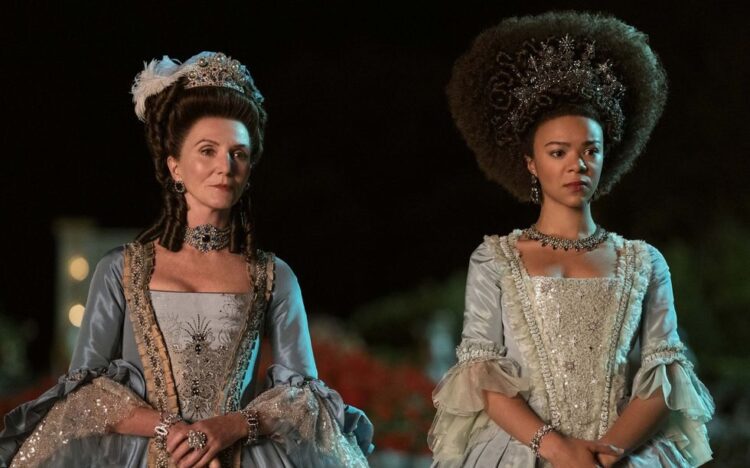
Although deeply in love with the King, Charlotte’s life at court was not easy and she regularly has to defend herself against her mother-in-law, Princess Augusta. This was also the case for the historical figure, Queen Charlotte, who clashed with Princess Augusta over formal rules of British aristocracy and was exhausted by her mother-in-law’s high expectations of her, needing to bear a lot of heirs for the lineage. After she had borne almost all of her 15 children, she wrote, “I don’t think a prisoner could wish more ardently for his liberty than I wish to be rid of my burden.”
7. Was Queen Charlotte Britain’s First Black Queen?
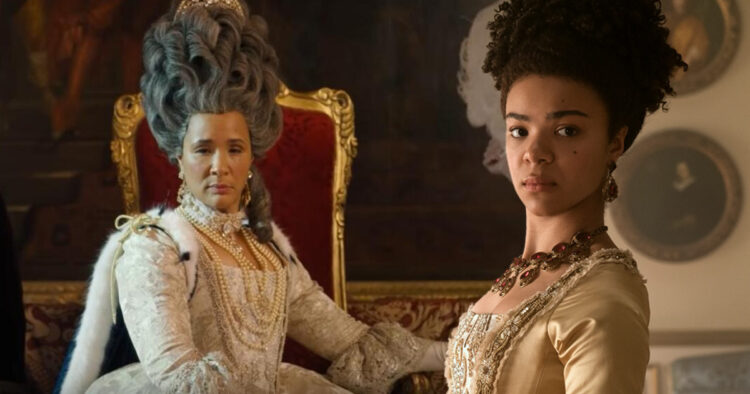
An often discussed aspect of Bridgerton is its interracial royalty, including Queen Charlotte, who is portrayed as Black in the show. Initially, it was widely assumed that her racial identity in the show was completely fictional. However, it is historically debated whether Charlotte’s ancestry had roots in Portuguese aristocracy, making her brown-skinned.
The historians who believe she had Black ancestors argue that portraits show her “African” features and other portrayals would suggest that the Queen was light-skinned and hid her ancestry to conform with white, eurocentric beauty ideals. Other historians argue, that her ancestry was too distant to actually affect her looks, and claim modern conceptions of race want to believe that the historic Queen was black. In the series, there’s a scene where Princess Augusta asks the painter to portray the Queen with a lighter shade; arguably, this could have been the case in real life. At the end of the day, Queen Charlotte: A Bridgerton Story succeeds from blending captivating fiction with intriguing true history.
 Follow Us
Follow Us
